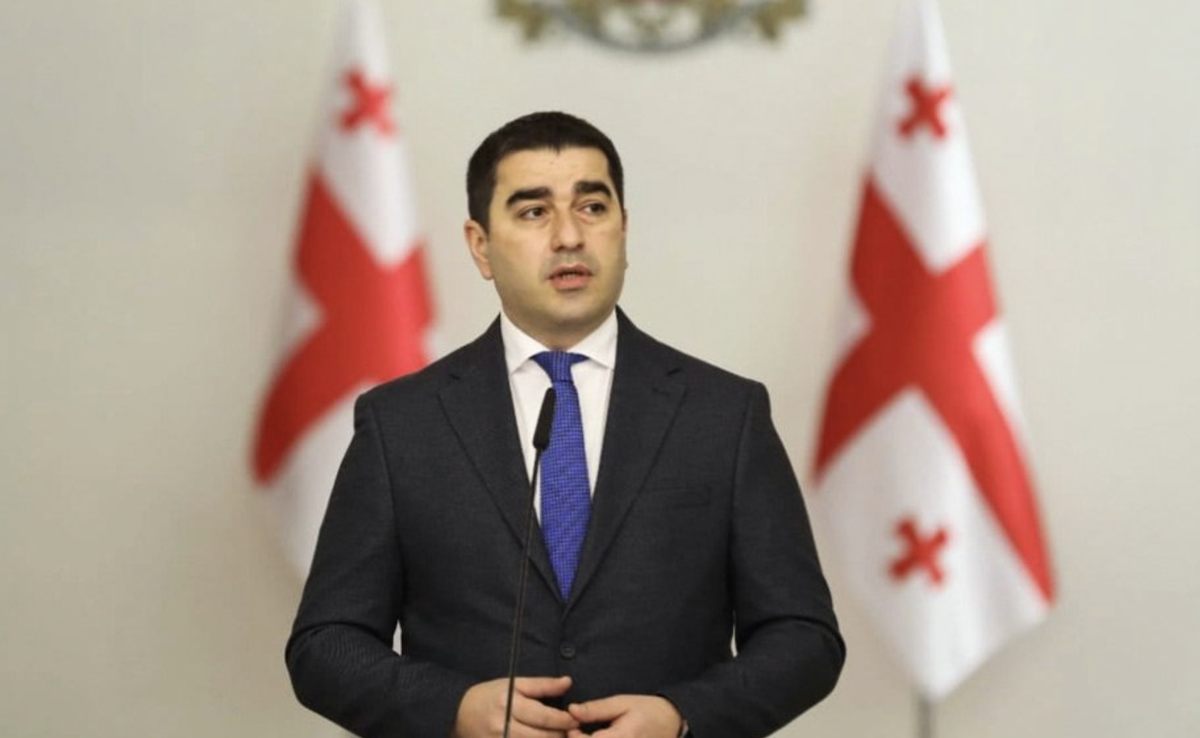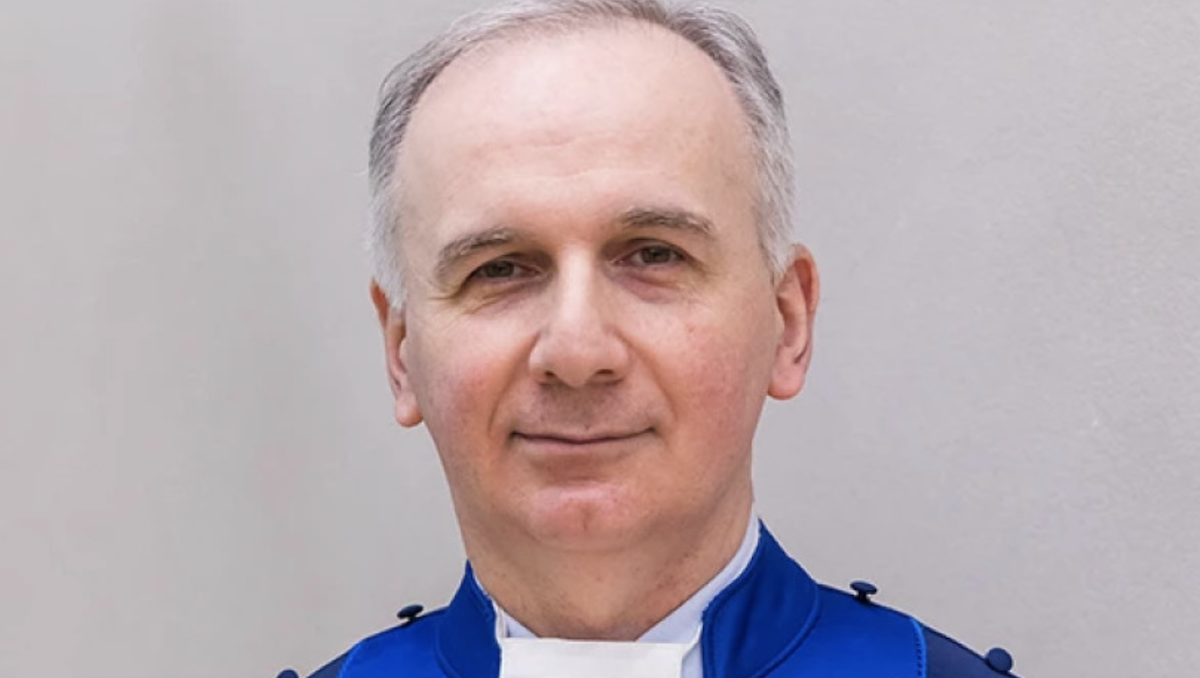Centuries old trees – the billionaire’s latest temptation
How Ivanishvili moves out trees
The article is about how Georgia’s former PM and its current informal leader Bidzina Ivanishvili has been building a dendrological park on his estate on the Black Sea coast. Dozens of giant trees have been uprooted from where they have stood for centuries in Western Georgia to be transported – by sea – to the park in a massive operation involving hundreds of people.

The article was first published exactly one year ago, however now as Georgia braces up for the presidential election runoff it has become relevant again.
__________________________
When the sun goes down and imparts its orange color to the sea, the liriodendron becomes especially fascinating, with its huge sinewy branches shaping their contours against the bluish sky.
It’s warm, the air’s still, not a single trace of a ripple on the sea. All this makes the scenery in front of me look more like a painting, rather than part of the dynamic reality.
This liriodendron is the most beautiful among the six trees being prepared for transport by barge to the dendrological park on the Black Sea coast. The tree’s currently been taken out of the soil and rests by the coast, waiting to be transferred to the residence of Bidzina Ivanishvili, located 35 km away.
• Presidential elections in Georgia: Why is the ruling party talking about civil war?
• The village where a billionaire lives
• Six things about Saakashvili you wanted to ask Georgians
• Landmines on the Georgian-Azerbaijani border
During my four day stay in Batumi, I visited the Makhinjauri coast every evening to see how the giant, temporarily planted in a container, would embark on its sea journey. To fully circle it, I would probably have to make at least 12 steps. Even its roots were utterly huge. I imagined it happening in the evening, at sunset.
“When is it supposed to be taken?” I asked the workers that were doing the preparatory work before the transportation: bringing gravel, cleaning the beach of big rocks, paving the way with concrete slabs, and erecting some kind of enormous construction with metal pipes.
On my way back from Adjara, my dream of seeing the departure was still unfulfilled. Ironically, on the second day, when I had already arrived back in Tbilisi, I received a call from Rezo and learnt that the tree was ready to be shipped that night.
“The barge has arrived, just like a coffin for a deceased person, which means that it’s time to go,” he said.

“You can only look from afar, but you won’t see much – the dwelling is concealed.” Rezo is a member of the workers team preparing the giant trees for transportation. Actually it’s not his real name, but in order to help him avoid getting into trouble at work, I promised to mention him by alias in the article.
I learnt from him how everything works: first soil is removed around the tree in a way not to damage the roots. After that, they place a rubber cushion similar to a tyre under it, which is then inflated by a special pump, forcing the tree upward. Finally, the tree is braced with planks and loaded onto a construction made up of metal pipes, then placed on a huge wheeled trailer to slide it down to the shore, to be picked up by the barge and carried to Ivanishvili’s residence.
The former Georgian PM and the country’s richest man used this method to transfer around 20 gigantic trees to his estate in Shekvetili – a village by the Black Sea coast. Ivanishvili says that collecting large trees is his hobby and favorite pastime, and that he needs them to set up the unique dendrological park.
The transfer of each tree takes several weeks, and involves hundreds of employees – botanists, geologists, engineers, workers, road builders, railroaders, electricians, security officers, cooks, and drivers.
In addition, heavy vehicles are necessary – tractors, cranes, bulldozers, trucks, electric locomotives, barges, and ships.
“A curious fact – such a thing has only been done in China once. And now we do it again here, in Adjara,” says Rezo and smiles.
Later on, I saw that cautious and ambiguous smile many times in Adjara and Guria, when questioning people about the billionaire’s unusual hobby.
Shekvetili – the billionaire’s residence
The residence of Bidzina Ivanishvili is located in Shekvetili, occupying at least 260 497 sq. m. of land, enclosed by grey metal railings, and follows the contour of the shoreline.
People say that one day the dendrological park will become public, allowing visitors to come and enjoy its beauties. But today, even a bird can’t freely fly inside its territory.
Apparently, Ivanishvili spends a large part of his time there, as according to the locals, they often see his helicopter appearing in the sky.
The residence is secured from all sides. The owner has apparently made sure to keep it away from prying eyes, using a high pine grove as a disguise.
Accompanied by the buzzing tractors and bulldozers, I walked along the fence of the residence on my way to the shore, while the workers are fussing around the huge “peninsula” floating in the water – the barge that carries the trees. I can’t tell its exact size in meters, but if my 11 story living block had a parking area of similar dimensions, it would easily accommodate all the vehicles of the residents.
A rusty vessel with a flapping five-crossed flag is floating nearby. It will soon be towed by the barge, commencing in this manner the marine journey of the tree.

“I’m from Natanebi.”
“I’m from Senaki.”
“I’m from Zugdidi.”
“I’m from Likhauri.”
“…and I’m from Ozurgeti,” say the workers that I spoke with, having a break and enjoying the May sun on the gray sandy beech of Shekvetili.
All of them are grateful to Bidzina Ivanishvili for employment, and they are satisfied with their salaries. Also, they are reimbursed the money they spend on daily food and accommodation.
“Being prosperous, he can afford it all,” says a young man with a Mingrelian accent, so I don’t ask any questions.
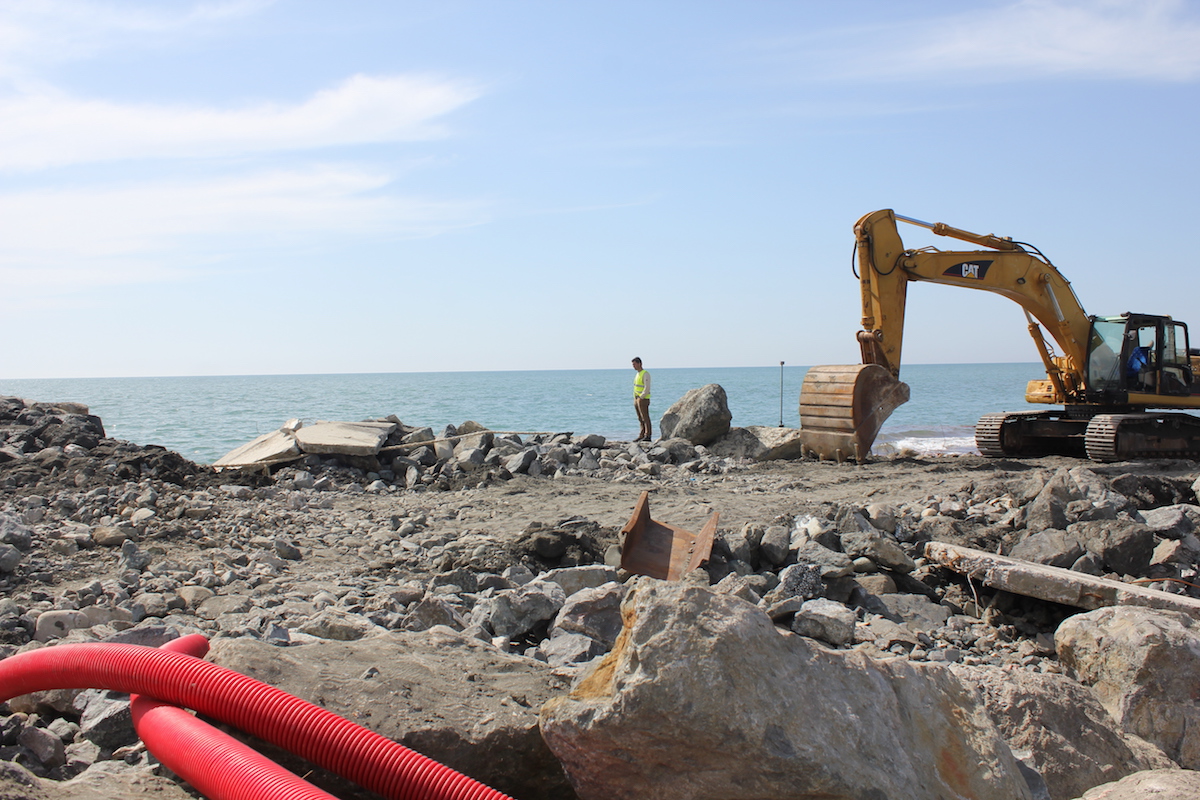
He alters the landscape
It’s been three years now since Bidzina Ivanishvili’s departure from the post of the Prime Minister of Georgia. In 2012, he gained an unexpected victory over Mikheil Saakashvili’s government which had ruled the country for 9 years, leaving the impression of an utterly invincible force against the feeble and uncoordinated opposition.
Today, he remains almost invisible, only making himself seen when visiting the site of the planting at the dendrological park. One would assume that he went through all those political struggles just to get access to these trees and relocate them without any hindrance.
He’s neither a high-ranking official nor a mysterious oligarch, which he used to be before coming into politics. He claims to be an ordinary citizen, but that’s definitely not true, and Ivanishvili knows that better than anyone else.
He only appears in the media during elections – actively participating in the Georgian Dream’s pre-election campaign. Then he disappears again from the public eye, yet his hand can be traced everywhere from the Georgian Black Sea coast to Tbilisi, both in governmental offices and in the corridors of the Parliament.
At the end of 2015, when one prime minister of the country had been replaced by another other, the relevant decision was made in Ivanishvili’s office. The orchestrated struggle of the ruling team against President Margvelashvili was initiated only after Ivanishvili had referred to Margvelashvili as his “biggest mistake”.
Ivanishvili has a new role today – he enjoys unlimited power without the burden of responsibility whatsoever.
Today in Georgia no one doubts that this man, who’s uprooting enormous trees and takes them to his place, runs the country from behind the scenes, determining its fate.
“It’s such large-scale activity, that it actually alters the region’s landscape,” environmentalist Nata Peradze said.
Sequoia and Ginkgo
The house of Valentina Slobodenyuk peeps out of the lush vegetation of a small hill of Tsikhisdziri village of Adjara, offering a beautiful view of the sea. And on the left, in just about 50 meters opens up a big gully – the mountain on which Valentina’s house rests has one side missing. Not long ago, there stood two humongous trees – a sequoia and a ginkgo. Both have been uprooted to be relocated to Ivanishvili’s residence.
“When they took the sequoia I was crying all night. It was a big part of my family history,” says Valentina, a nice looking Ukrainian woman that was born and raised in Tsikhisdziri, having spent her whole life in that house.
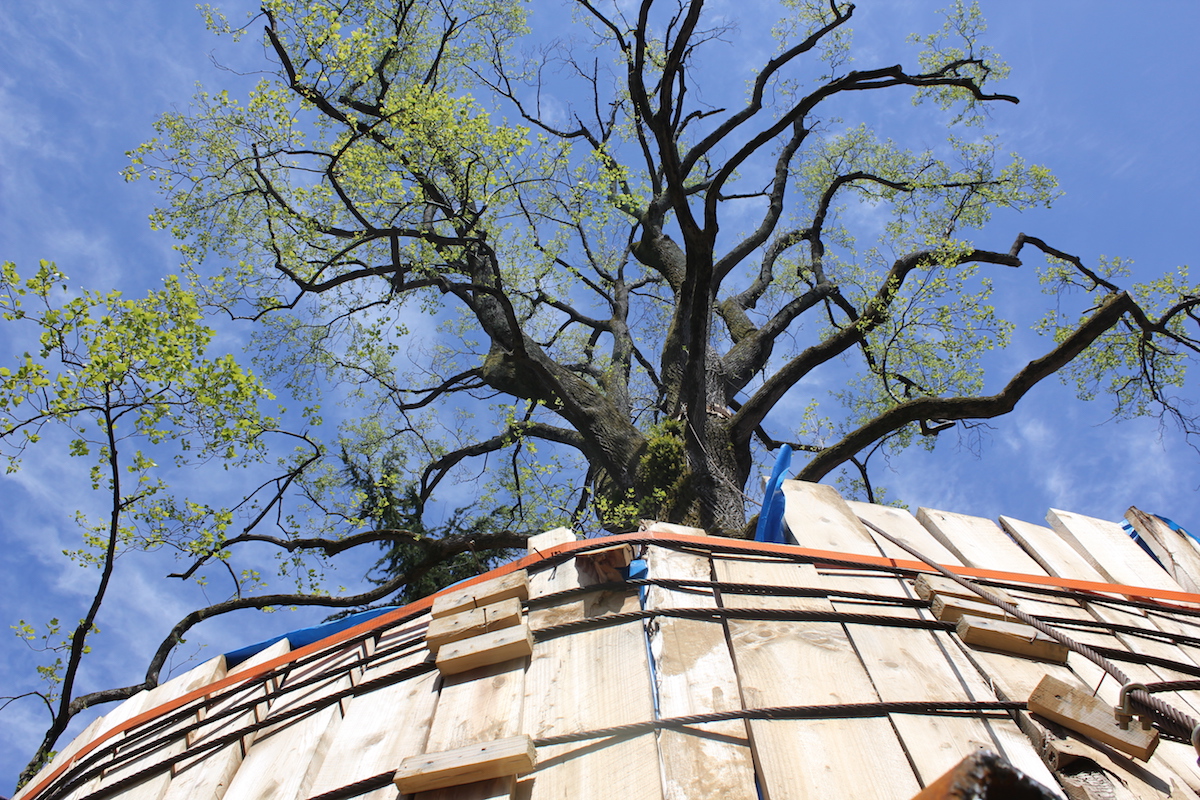
“Why did you relinquish the trees so easily?”
“He didn’t exert any pressure on us, on the contrary, he’s very humane and attentive. Besides, I needed money and I couldn’t refuse the opportunity. My cousin called me fool, yet I have no regrets. He loves nature and will take good care of my trees, and new ones will be planted here,” says Valentina.
Then I point to the huge gully next to the house and ask whether or not she’s afraid that the rain may cause a landslide and bring down the house.
“He promised to fix everything and build a supporting wall to secure the slope.”
The trace
“The trace is everywhere, just follow the concrete slabs and you will find the unmistakable crime spot,” a fellow journalist told me when I was preparing to go to Adjara to do the report.
I saw concrete slabs on the central road and plenty of them in the villages – Natanebi, Bobokvati, Chakvi, Tsikhisdziri, Buknari, Green Cape, and Makhinjauri. I also found them in the forest. They are necessary for heavy vehicles to approach the gigantic trees and take them out. Such solid materials are also used in the construction of military roads, to ensure safe passage of tanks. The other trees that hampered the road to the chosen tree were cut down at the root level, some were left with roots exposed due to the excavation of the huge masses of soil.
This picture is far more impressive than the one captured on the photos and the video footage. It’s like a giant monster has ploughed through, leaving a humongous trace.
The Kobuleti-Batumi road, fringed with a unique subtropical flora, now features a continuous row of broken trees. The local exotic trees that hindered the transportation of the giant tree, currently stand with their branches cut off and scattered on the ground. Something similar can be witnessed in Guria, on the way to Natanebi village.
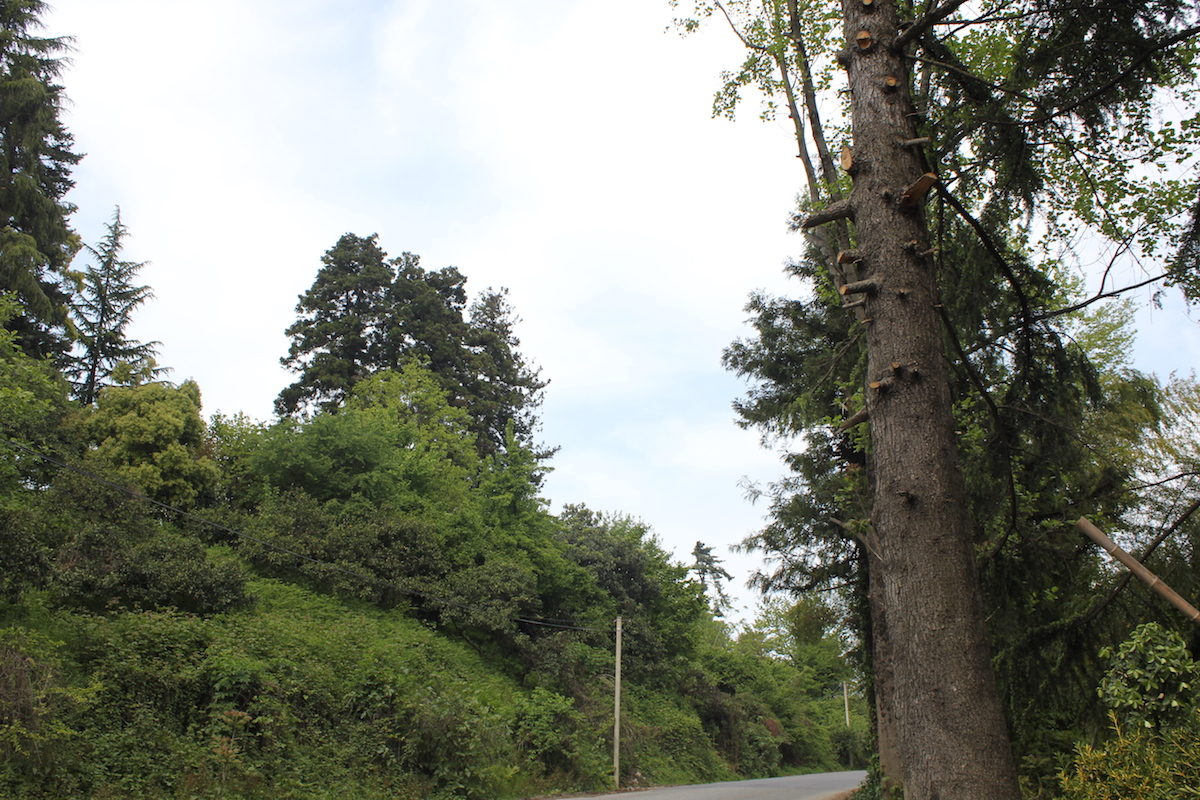
The width of the road has been increased and the sidewalk in Chakvi reduced to provide easy access to the specialized equipment. A special pier has been constructed at the coast of the village from where they ferry the trees to Skekvetili. In order to construct the pier, they blocked access to the sea by villagers living in the nearby houses.
The transportation of the trees by land to the final destination is also escorted by several police vehicles. Around two months ago, a gigantic tree caused a traffic jam on the Batumi-Kobuleti motorway that lasted a few hours.
I was told in Natanebi that the transportation is accompanied by power cuts, as its likely that the branches get snagged on the power lines and cause fires. Some families of the village have been left without water, after pipes were damaged in the process of digging out the trees.
I see about 50 men in overalls on the railway in Bobokvati. An electric locomotive has been brought right under the power lines, in order to detach them, as they block the transportation of a huge conifer by railroad.
“So the train won’t be able to pass?” I asked.
“The lines will be restored in an hour and a half. There won’t be any delays, as no train’s scheduled for that time.”
“Do you think you’d be allowed to remove the power lines in case you wanted to do something like that for yourself?”
“Well, if I had enough money to fulfill such a fancy, I’d be allowed pretty much everything.”

The workers told me that sometimes it’s necessary to remove the rails. These workers, from Samtredia, have been hired specifically for that purpose.
Nonetheless, environmentalists say that what we currently see with the naked eye as just the tip of the iceberg. “The main damage is inflicted on the soil and the landscape of Adjara. The soil of Batumi and Kobuleti area mainly consists of clay, which turns it into a zone with a high landslide potential, and that any kind of interference may trigger the process,” they argue. Digging out trees means the removal of the fertile soil stratum, which can result in erosion.
“The environment here will never recover to its previous state, irrespective of the actions implemented,” says environmentalist Irakli Macharashvili. In the meantime, some of the geologists and botanists altogether avoid discussing the topic with journalists, as many of them are participants in Bidzina Ivanishvili’s projects.

Four private companies are engaged in the transfer of Ivanishvili’s trees.
The billionaire once publicly required that they should obtain official permission prior to the scheduling of works:
“You got to have permission for everything that’s being done, in total compliance with the law,” he told the people carrying his trees, following the emergence of certain irregularities in the documents concerning the uprooting of a tree in Kobuleti. Ivanishvili then ordered to discontinue the work in front of environmentalists and opposition representatives who had congregated on the spot, and to resume only after due permission had been obtained.
The official part was soon settled and the work resumed. It turned out that to have the permission granted by the local authorities is no big deal. Though the company that works for the billionaire somehowdidn’t even consider it necessary to observe the formal order.
Ivanishvili buys trees both from private individuals and the state. It’s hard to tell how exactly the budget has benefited from that. We, however, know the price for each tree. The Batumelebi Magazine has conducted a full investigation on the case of the tree transfers. According to the document, three trees put up at the auction in Tsikhisdziri had been bought for GEL 13 500 by the only bidder – the company that belongs to Ivanishvili. The first tree transferred to Shekvetili, a giant liriodendron, was purchased along with two other trees by the billionaire for a total sum of GEL 6 200.
“The whole thing simply proves that any public property in Georgia can easily become Ivanishvili’s official or unofficial property. Nothing can prevent that,” publicist Zaal Andronikashvili, to whom I had shared my impressions from travelling to Adjara with, told me.
Simple man
“He came 8 times, and once even jumped over the fence. He carefully scrutinized the tree. He’s a simple man,”- says Lado Surmava, a Natanebi native who sold a two-century old tree from his yard to the oligarch for USD 5000, and paid his bank arrears with the money. Everyone whom Ivanishvili got a tree from reports the same – that the oligarch came personally several times to examine the tree. He doesn’t coerce anyone into anything, yet is almost never refused.
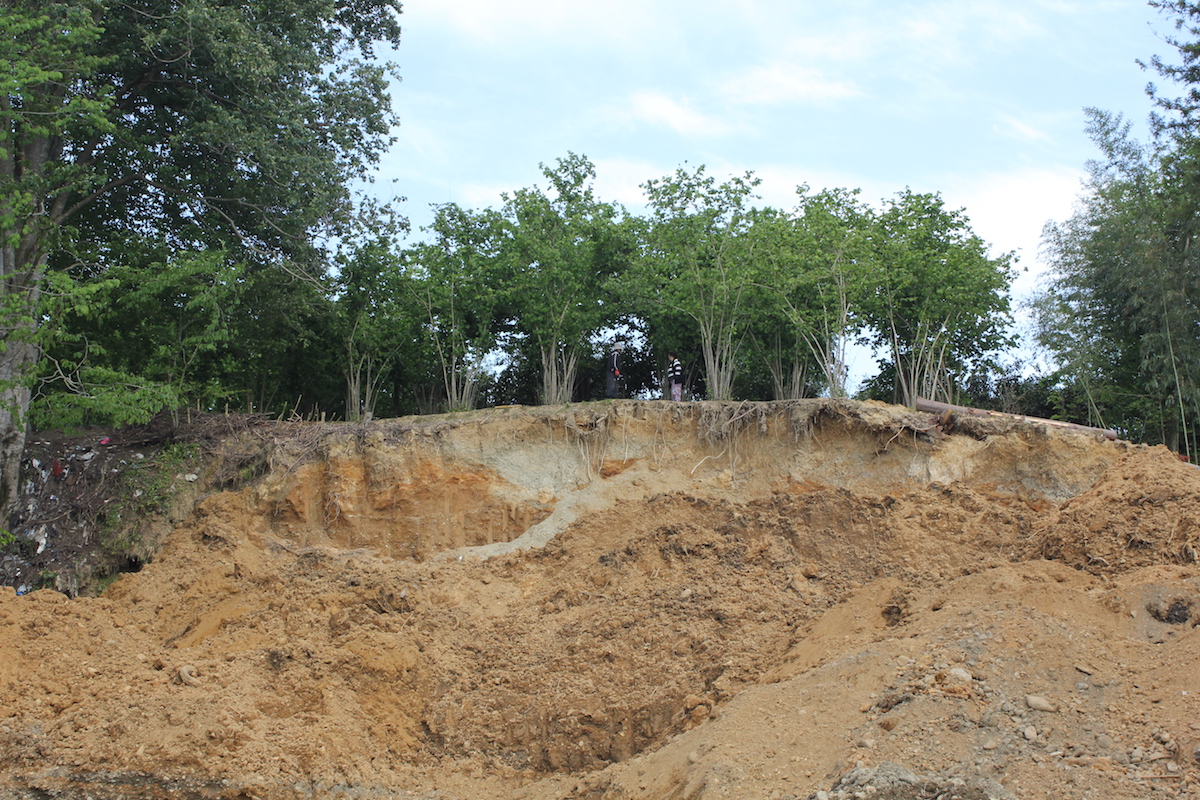
In one of the villages, a family traded their tree with Ivanishvili for a computer. All of them say that they didn’t attempt to haggle with the oligarch, and readily accepted the proposal. The story of the Surmavas’ tree is probably the saddest of all – the tree was incapable of handling the stresses associated with transportation and broke in half. People say that everyone cried that night in the family – both the kids and the adults.
The spot where the tree stood is now just a huge cavity in red soil, just as large as the foundation pit of a multi-storey building. The trunk, together with the broken branches, rests inside that hole. Two men are chopping them up with axes to provide the village with firewood.
For many, the beech tree has become a symbol of defiance – the only tree that had refused to be a part of the oligarch’s plans.
In Guria, in the villages of Ureki and Natanebi, people are especially grateful to Ivanishvili. As I was told there, at least one person from each family is employed in the decoration work of Ivanishvili’s residence, either in the transportation of trees or some other project.

This man can do anything, can’t he?! He offers much to the needy, so who’s gonna turn down such an opportunity? He has brought a piece of Adjara to Guria and now has taken Natanebi to Shekvetili,” says a middle-aged Natanebi native who I gave a lift to, to the central road.
Strange hobby
The richest man in Georgia says that the old trees are his hobby and main amusement, and that it doesn’t harm anyone.
I don’t live a luxurious life, and do without jewelry, expensive clothes, or any other amenities of the sort that might make me feel uncomfortable. My passion is gigantic trees. However, I agree with the opinion that I probably spend too much on the transportation, planting, or purchasing of trees,” he said in the ‘liriodendron movie’, produced by his own television station GDS (Georgian Dream Studio).
Considering the large-scale process, one can only imagine how much exactly the transfer of each tree costs.
In this year’s Forbes list, Ivanishvili rates 367 among billionaires, with his fortune estimating at approximately USD 4.5 billion. He spends part of that capital on art. His collection includes Picasso’s Dora Maar au Chat (Dora Maar with Cat), for which he paid 95 million, and paintings of Frida Kahlo. In addition, he also owns exotic animals like zebras, penguins, and even sharks.
Even the time he goes to sleep is unusual for Georgians – 10 p.m. He likes discussing psychoanalysis, Nietzsche, and Freud in TV programs. He’s working on a book dedicated to the essence of man. In 2011, prior to his coming into power, a friend of his that had brought from Moscow occult minerals and literature for the oligarch, was detained in Tbilisi airport.
“What does he need them for?” The question I asked to many in Adjara in Guria.
“He has money and does whatever he wants,” was the most popular answer. That viewpoint is also supported by Mr. Kemal that lives in Makhinjauri and comes to the sea shore with his grandchildren everyday to see the giant tulip tree.
There were more peculiar versions as well. For instance, some believe that Ivanishvili wouldn’t have wasted that much money without reason, and that those giant trees have a big mystery behind them: “he embraces them and feeds off their energy.”
Others maintain that he wants to inscribe his name in history by building a very unique park.
I even heard a version suggesting: “Guria doesn’t have that much oxygen and he needs the trees to improve the quality of the air he breathes there.”

“What’s the purpose of collecting the trees? – to make a public dendropark,” that’s the version a representative of Ivanishvili’s Cartu Group, Giorgi Udzilauri tells.
Udzilauri also says that Ivanishvili isn’t liable whatsoever to hand the park over to the state. “It’s solely up to Bidzina Ivanishvili to make the relevant decision,” he says, “due the park being private property.”
All the stored trees that I saw in Adjara and Guria will be delivered to Shekvetili by the end of May, and replanted at their new locations. As we learnt from relevant sources, the process of pulling out trees will be stopped until September, because summertime is an unfavorable period for replanting.
Besides, the tourist season opens in Adjara in a month, which will make it simply impossible to handle both tourists and tree transfers. “We plan to resume the project in September,” says Rezo, who attaches great importance to his job, because of the three children that need sustenance.
I’m standing by the fence of the billionaire’s residence in Shekvetili trying to see what’s happening inside. Huge trucks are passing by relentlessly on the graveled road, leaving trails of dust clouds behind, as if deliberately, purposefully, to prevent me from seeing anything.
At one point, during the lulls, just long enough to allow the dust to dissipate, you could catch a glimpse of the silhouette of a shapeless tree devoid of foliage, looming very high in between the pines. It’s the century-old liriodendron that has already become such a legend in Georgia – the first tree transported here by sea last spring. Strangely, the image of Surmavas’ beech tree popped up in my mind, the only rebel that managed to thwart Ivanishvili’s plans.

On my way back from Adjara, I saw a big truck loaded with gravel.
“Are they carrying a tree?” I asked with my camera ready in my hands.
“What tree, my dear? We’re building a hotel,” responded the driver with the familiar smile communicating caution and ambiguity.
* Author: Sopho Bukia, editor of JAMnews in Tbilisi













